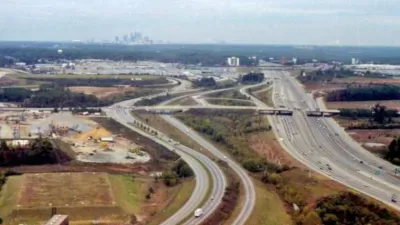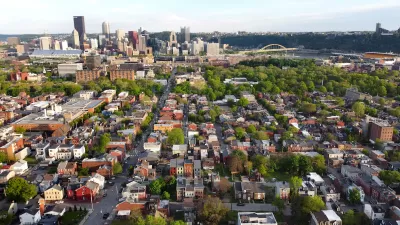New York Times columnist Paul Krugman looks at two great American cities, one losing population for decades and now filed for bankruptcy, the other growing rapidly but through sprawl, not smart growth. Yet Atlanta suffers lower social mobility.

Krugman asserts that "in one important respect booming Atlanta looks just like Detroit gone bust: both are places where the American dream seems to be dying, where the children of the poor have great difficulty climbing the economic ladder. In fact, upward social mobility — the extent to which children manage to achieve a higher socioeconomic status than their parents — is even lower in Atlanta than it is in Detroit."
Krugman, who won the Nobel prize in economics in 2008, was referring to a landmark study (described here) that in fact showed that both "the Southeast and industrial Midwest are the most difficult places to rise out of poverty."
According to Krugman, the UC Berkeley/Harvard University study "suggests that (Atlanta) may just be too spread out, so that job opportunities are literally out of reach for people stranded in the wrong neighborhoods." In other words, the land use patterns in Atlanta, "the Sultan of Sprawl, even more spread out than other major Sun Belt cities", are making it difficult to move up the income ladder.
Atlanta is the poster child of American cities that show the need for smart growth, according to Krugman.
The apparent inverse relationship between sprawl and social mobility obviously reinforces the case for “smart growth” urban strategies, which try to promote compact centers with access to public transit.
The study caused Krugman to think of distinguished University of Chicago sociologist, William Julius Wilson, who wrote how the "postwar movement of employment out of city centers to the suburbs dealt African-American families, concentrated in those city centers, a heavy blow...".
These days, you hear less than you used to about alleged African-American social dysfunction, because traditional families have become much weaker among working-class whites, too...But the new research on social mobility suggests that sprawl — not just the movement of jobs out of the city, but their movement out of reach of many less-affluent residents of the suburbs, too — is also playing a role.
While it may seem odd that Krugman sees similarities to a thriving Southern city and a bankrupt Midwestern one, thanks to the research done by Raj Chetty and Nathaniel Hendren of Harvard and Patrick Kline and Emmanuel Saez of UC Berkeley, Krugman was able to show the harm that sprawl does to those on the bottom of the economic ladder.
FULL STORY: Stranded by Sprawl

Planetizen Federal Action Tracker
A weekly monitor of how Trump’s orders and actions are impacting planners and planning in America.

Chicago’s Ghost Rails
Just beneath the surface of the modern city lie the remnants of its expansive early 20th-century streetcar system.

San Antonio and Austin are Fusing Into one Massive Megaregion
The region spanning the two central Texas cities is growing fast, posing challenges for local infrastructure and water supplies.

Since Zion's Shuttles Went Electric “The Smog is Gone”
Visitors to Zion National Park can enjoy the canyon via the nation’s first fully electric park shuttle system.

Trump Distributing DOT Safety Funds at 1/10 Rate of Biden
Funds for Safe Streets and other transportation safety and equity programs are being held up by administrative reviews and conflicts with the Trump administration’s priorities.

German Cities Subsidize Taxis for Women Amid Wave of Violence
Free or low-cost taxi rides can help women navigate cities more safely, but critics say the programs don't address the root causes of violence against women.
Urban Design for Planners 1: Software Tools
This six-course series explores essential urban design concepts using open source software and equips planners with the tools they need to participate fully in the urban design process.
Planning for Universal Design
Learn the tools for implementing Universal Design in planning regulations.
planning NEXT
Appalachian Highlands Housing Partners
Mpact (founded as Rail~Volution)
City of Camden Redevelopment Agency
City of Astoria
City of Portland
City of Laramie





























